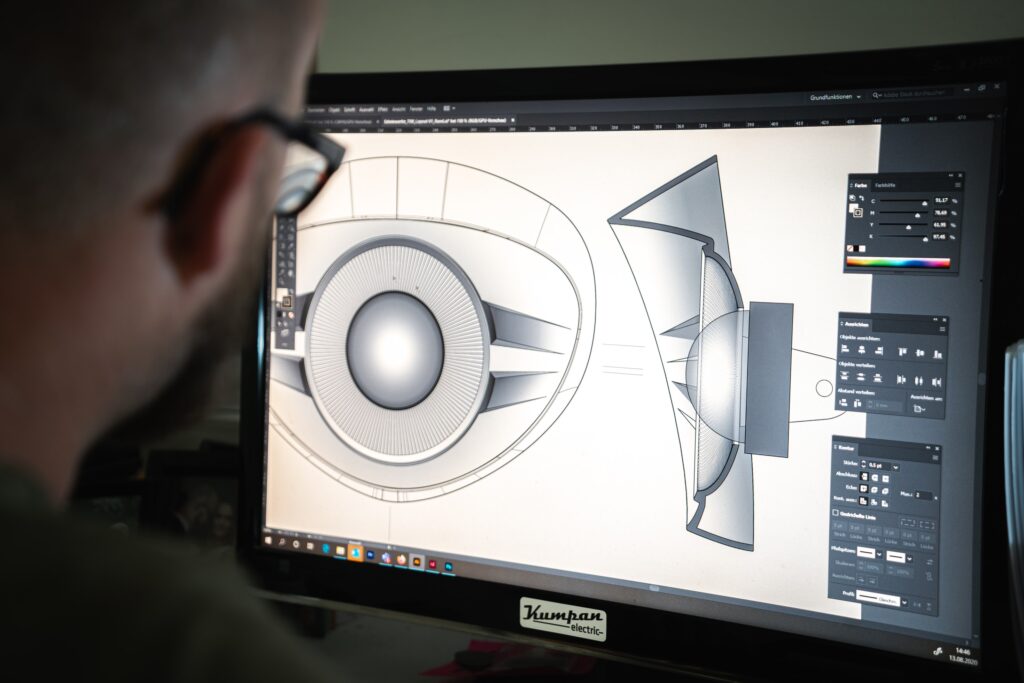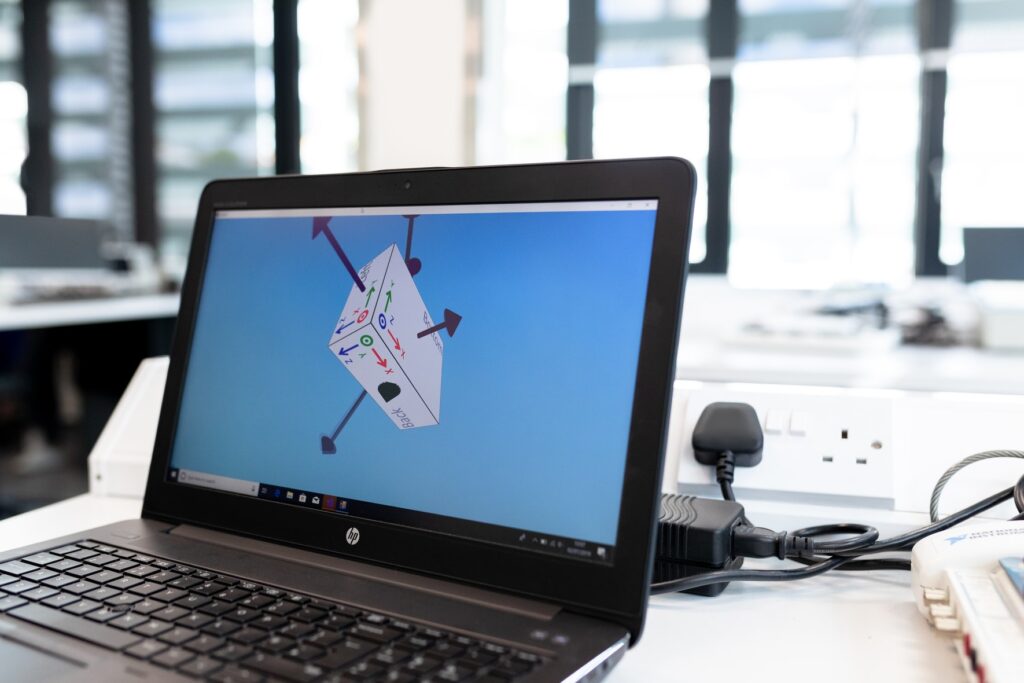TL;DR
Product Design is the process of making a physical product right from the ideation phase to the actual manufacturing of the product. It involves Design Conceptualization by iteration and sketching, Modelling in CAD programs, testing and analysis of digital designs computationally to check for manufacturability and load strength, and then using Mechanical Engineering first principles to estimate impact points and change load/shape/material to bring the design to the required factor of safety. If flow elements are to be taken care of, CFD simulations come in handy. All this keeping in mind the aesthetics of the body, mainly by hand-drawn sketching sketches, and economic feasibility and business requirements.

The final phase of manufacturing is carried taking into mind all the work laid out in the Design Process.
Therefore, it is the design is to design parts, components, products, or systems of mechanical nature. For example, designs of various machine elements such as shafts, bearings, clutches, gears, and fasteners fall into the scope of mechanical design.

The design comprises the whole of Design conceptualization by iteration and sketching, Modelling in CAD programs, testing and analysis of digital designs computationally to check for manufacturability and load strength, and then using Mechanical Engineering first principles to estimate impact points and change load/shape/material to bring the design to the required factor of safety. All this keeping in mind the aesthetics of the body, mainly by hand-drawn sketching sketches.
How did I learn the skill?
One of my childhood curiosities is looking at objects from different angles and wonder how the object was made. When I got my first computer and had access to google.com, I remember spending hours searching how people made things, and what did people do to be able to make those things. Choosing mechanical engineering as a major during undergrad, therefore, was an easy choice.
Subjects studied
- Engineering Design Graphics:
Engineering drawing, most commonly referred to as engineering graphics, is the art of manipulation of designs of a variety of components, especially those related to engineering. It primarily consists of sketching the actual component, for example a machine, with its exact dimensions. The scale of dimensions is suitably adjusted so as to properly fit within the contours of the drawing sheet.
It was here where I was exposed to hand drawing of components, to exact scale, using drafters and pencils. This later evolved into us being taught to use AutoCAD to make 2D drafts of objects, to exact dimensions.
Grade Earned: A - Computer Aided Machine Drawing (CAD):
The next semester, we were introduced to CAD Modelling, i.e. making 3D design prototypes from a given isometric draft. Software used: Creo Parametric.
Grade Earned: A+ - Mechanics of Machines
Mechanics was one of my favourite topic in Physics back in high school, simply because it involved a lot of math, and was the most relatable to the real world. When I entered University, Mechanics was clearly my go-to field, and boy did I score well in them. I think most of the concepts came naturally to me, and the fact that I was good at Math made it easier to solve equations.
The subject was taught to us over a year, broken up into 2 semester subjects: Kinematics of Machines and Dynamics of Machines.
Grade Earned: A+ in both - Design of Machine Elements
Machine Design is defined as the use of scientific principles, technical information and imagination in the description of a machine or a mechanical system to perform specific functions with maximum economy and efficiency. It is the art of synthesizing a detailed plan to develop a new machine, machine tool or machine component, ensuring that it performs its intended function for an anticipated period of time.
the subject is less relates about the design aesthetics, but more about the core strength of shapes and designing materials so as to ensure adequate factor of safety (FOS) to avoid failure.
This along with Mechanical Vibrations is one of the most feared subjects. I was not surprised when it came naturally to me. Not only did I score well, I taught so many friends in groups.
Grade Earned: A+ - Mechanical Vibrations
Coming into the second-last semester, this was the most feared of them all. You could not pass this subject if you haven’t done decently in previous subjects in mechanics.
I think it was easy for me to get a hand on 2 DOF problems, after going through Damped, undamped and forced oscillations problems earlier.
Grade Earned: A+ - Trends in Vehicle Styling and Ergonomics
This is the last and most advanced level course that I have taken in Automotive field. It not only dealt with sketches and shapes of cars that have been in the past, but also the trends that automakers tend to follow while designing their new vehicle, while taking into consideration the aesthetics and standards set by ISO.
Grade: A+ - Reliablity Based Design
The subject dealt with how failures of component occurs due to uncertainity in load and loading history, difference in geometries, safety conditions, and how we can reduce the likelyhood of failure of a product, identify correct causes of failure, and to reduce them.
Loads of statistical techniques were also used to test the reliability of a sample from a population, and to discard the lots where products were not relaible. It course opens brain nodes and forces us to think away from deterministic design and focus more on failure modes and reasons and how to reduce them.
Certifications/Software
The following certificates
- AutoCAD Autodesk Certified
- SolidWorks
- Creo Parametric
- DS CATIA
- ANSYS (Structural and Fluent)